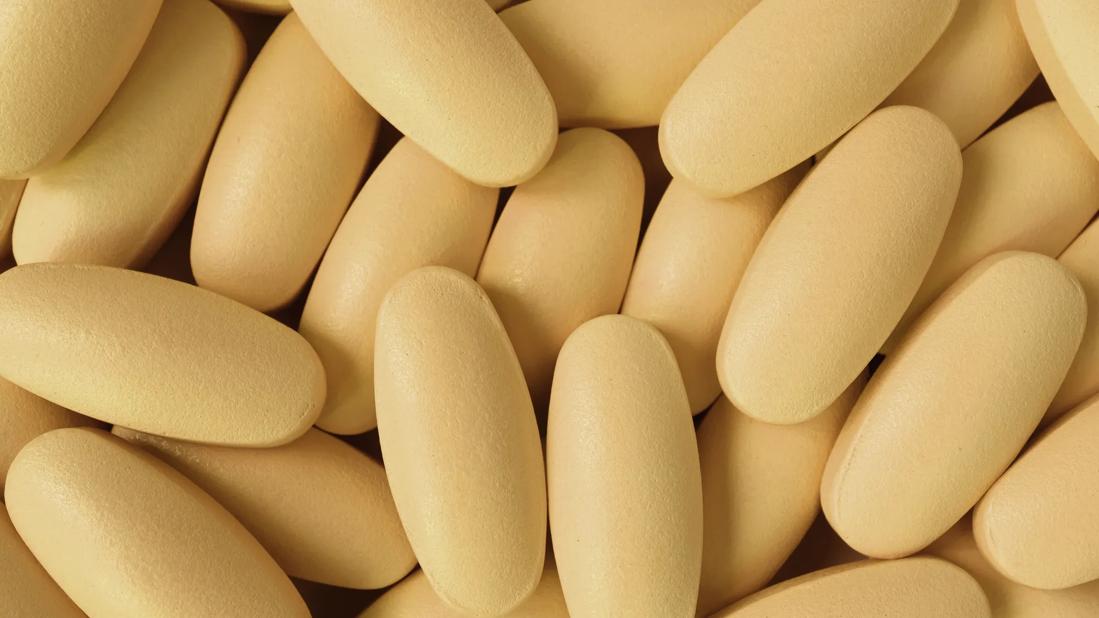The results aren’t great, and the risks — like vision problems — aren’t worth it

When tank-top weather hits or you have a vacation on the horizon, you may dream about getting a sun-kissed glow. Wouldn’t it be great if you could magically get a tan from a pill?
Advertisement
Cleveland Clinic is a non-profit academic medical center. Advertising on our site helps support our mission. We do not endorse non-Cleveland Clinic products or services. Policy
Turns out, tanning pills do exist — but they’re definitely not magic. The results are less than impressive, and some tanning pills are downright dangerous.
Dermatologist Amy Kassouf, MD, explains why tanning pills aren’t a good choice and discusses the safest tanning alternative.
So-called tanning pills are supplements containing one or more chemicals that can affect the color of your skin.
Active ingredients in tanning pills include:
Tanning pills may or may not affect the color of your skin, as everyone reacts differently. But it’d be a stretch to claim they create a tan. At best, you may end up a little more orange.
“In some skin types, these tanning pills may make you look a little tan because they can give an orangey glow,” clarifies Dr. Kassouf. “This happens because the active ingredient deposits in the upper layers of your skin.”
Advertisement
One major problem with tanning pills: The areas of your body that may turn the darkest aren’t necessarily the areas you want. “The ingredients in tanning pills concentrate more in the calloused or thicker-skinned areas like your palms and the soles of your feet,” she says.
Orange hands and feet? Not exactly a natural-looking tan.
No tanning pill is entirely safe, but the level of risk depends on the ingredients. Canthaxanthin is the tanning pill ingredient with the greatest potential to be dangerous.
“This substance can get deposited in any organ in your body, which can be harmful,” states Dr. Kassouf. “For example, a company that tried to get their canthaxanthin tanning pills approved by the FDA withdrew their application because the product caused vision problems.”
Beta-carotene and lycopene differ from canthaxanthin because they occur in food and have health benefits. But that doesn't mean taking large amounts of them — or any nutrient — in pill form is a good idea. Plus, all supplements come with risk.
“Over-the-counter supplements aren’t regulated,” Dr. Kassouf says. “None of these tanning pills are FDA-approved.” That means a tanning pill may:
And in case you were wondering, a tanning pill “tan” doesn’t protect you from the sun’s UV (ultraviolet) rays, which can cause burns and lead to skin cancer.
“Tanning pills don’t work well and aren’t worth the potential danger,” she adds. “Don’t waste your money on something that could harm you — and won’t even make you look natural or healthy.”
Tanning pill ingredients can carry the risk of side effects, like:
“Topical self-tanning creams are the safest alternative to tanning pills, tanning beds or tanning in the sun,” says Dr. Kassouf. “All topical sunless tanning products, including spray tans, have the same active ingredient, dihydroxyacetone (DHA). This ingredient works by binding to dead skin cells on outer layers of your skin and darkening over time.”
Advertisement
DHA is relatively safe to use on your skin. However, it’s toxic when inhaled. For this reason, Dr. Kassouf recommends sunless tanning creams as your best option. Spray tans aren’t totally safe. (And nasal tanning sprays are especially dangerous.)
Thinking about a tanning bed? Don’t do it — tanning beds and booths dramatically increase your risk of skin cancer.
Keep in mind that a sunless tanning cream doesn’t protect you from the sun or prevent skin cancer. So, if you’re going outside, Dr. Kassouf advises you wear:
A safe tanning pill that actually works may still be a fantasy, but if you hate slapping on sunscreen, the future may hold a new option: a sunscreen pill. “This is still to be determined, but companies are working on these,” shares Dr. Kassouf.
Advertisement
Until then, get your glow on with a sunless tanning cream and cover up with clothes or sunscreen when you’re outside.
Advertisement
Learn more about our editorial process.
Advertisement

Several conditions, like vitiligo and fungal infection, can cause a loss of pigmentation, leading to white spots or patches on your skin

This cooling gel can help soothe sunburned skin, but it can’t cure the burn

You know it’s not good if you’ve been holding onto it for more than three years or if it’s changed in color, consistency or smell

Look for a UPF rating of 50+ for optimal protection against UV rays

A sunburn will leave you itchy and red, while sun poisoning can feel like an allergic reaction

A cool shower, aloe vera gel, anti-itch treatments and cool compresses can provide fast sunburn relief

SPF stands for ‘sun protection factor’ — it’s a measure of how much protection you’re getting before a sunburn is possible

This ‘poisoning’ is actually a severe sunburn that seems similar to an allergic reaction

Babies can get congested easily, but you can calm their cough by keeping them hydrated, using nasal drops and running a humidifier

Weight loss may cause loose, sagging skin and muscle loss to your rear

Several conditions, like vitiligo and fungal infection, can cause a loss of pigmentation, leading to white spots or patches on your skin